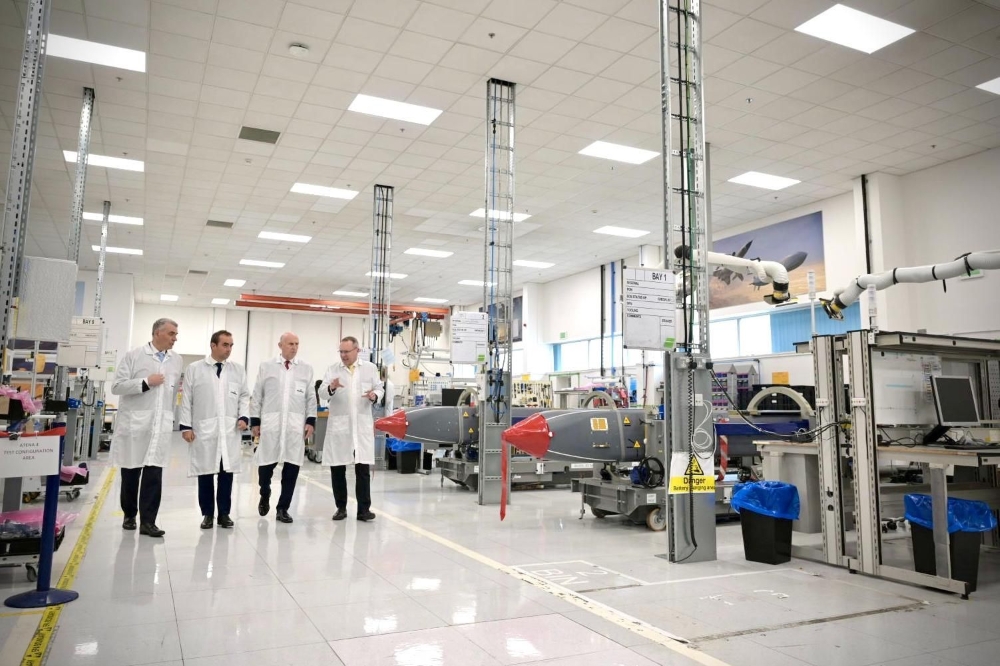
During the State Visit of French President Emmanuel Macron in the United Kingdom, a “Lancaster House 2.0” agreement has been reached, building on the commitments of the original treaty dating back to 2010.
The new “Declaration on Modernising UK-French Defence and Security Cooperation” contains a long list of important commitments, although a few of them look, already from the start, unlikely to go far.
One important and arguably overdue measure adopted by the two Countries is the restart of SCALP/STORM SHADOW missile production. On July 9, Secretary of State for Defence John Healey and French Defence Minister Sébastien Lecornu visited the MBDA UK plant in Stevenage which handles the Mid-Life Refurbishment of STORM SHADOW missiles and subsequently announced that production of new missiles would resume. In the words of Lecornu, the new order, for an undisclosed number of missiles, comes “15 years after our last order”, a stark reminder of a reality of dormant, if not dead, production lines across Europe.
The british MOD has referred to Stevenage as STORM SHADOW "production" site for a couple of years now, possibly implying that initial work to restart production has already taken place in the background, but no official, univocal information has ever been provided. What is certain is that Stevenage handles the refurbishment and upgrade of the existing missiles. For the Royal Air Force, the Mid-Life Refurbishment of STORM SHADOW is also internally known as Selective Precision Effects At Range (SPEAR) Capability 4 and the upgraded missile underwent Operational Evaluation at White Sands in the US in the Summer of 2021, with 4 launches from TYPHOON which included operating under GPS Jamming. Stevenage is also applying the Mid-Life Refurbishment to Italy’s own missiles after Rome joined the program.
The joint Declaration says that France and UK will “acquire new SCALP & Storm Shadow missiles, following their successful use by Ukraine” with the “upgrading [of] UK and French production lines to bolster national stockpiles to deter our adversaries”.
The order is unlikely to be vast and production is unlikely to be quick, but the coming of new rounds should enable both the UK and France to hand over more of the remaining missiles in their stock to Ukraine.
UK and France also “launch the development phase of the Future Cruise and Anti-Ship Weapon (FC/ASW) programme to provide the next generation of long-range, highly survivable Deep Strike Missiles”. This was an expected development, as we wrote recently following the Paris air show. The actual contract signature with MBDA has yet to happen, however, and Italy is expected to also be present when that will take place.
London and Paris also commit to jointly progress developing plans for a Mid Life Upgrade for METEOR, a project for which Germany has also started reserving some funding. It is hoped that an agreement on the MLU plan will be reached over the course of this year, with the MOD projecting the entry in service of the upgraded missiles around 2033.
Far more surprising is the announcement of a “joint study with industry to inform our future development of its [of METEOR] successor”.
In support of these commitments, a joint Complex Weapons Portfolio Office is to be created within OCCAR to handle the joint projects and to work close in hand with MBDA on the possibility of launching more, to “identify the opportunities from our investments and to reduce duplication”. The work with MBDA will initially focus on “studies on Air Dominance and Cooperative Strike future capabilities”, with the first obviously tied to the study for a METEOR successor. About the latter, MBDA UK has been working on the ORCHESTRIKE AI core for potential embodiment already within the SPEAR 3 mini-stand off missile and that’s likely to be the starting point.
The Declaration also promises to “focus greater efforts on integrated air and missile defence (IAMD) in our capability relationship, including (but not limited to) C-UAS and counter-hypersonic capabilities, drawing especially from the Aster family increments, including potentially SAMP/T NG and CAMM”, but it would be wise to keep expectations down. France has already ordered its MICA VL and is highly unlikely to walk that back to adopt CAMM instead; the UK would arguably have every reason to procure SAMP/T NG to expand its Ground Based Air Defence capabilities, but the cost makes that unlikely in the near future.
We also see as quite unlikely that the UK will follow France on “counter-hypersonic capabilities” that we can only assume mean Hypersonic Defence Interceptor System (HYDIS), the 3-year concept study, led by MBDA France, for a new interceptor / family of interceptors to be derived from ASTER and launched primarily from Sylver VLS.
The UK’s lead for anti-hypersonic work lies effectively with the Royal Navy through the Future Air Dominance programme for a new combination of radar and weapons for the Type 45 successor ships, and the Royal Navy has clearly indicated its intention of going with MK41 VLS and, most likely, US weapons via AUKUS, preferably.
Another vague commitment is for enhanced cooperation within European Long Range Strike Approach (ELSA initiative). The UK has already committed to setting up a project with Germany for a 2,000 km strike solution, but will “remain open” to projects with France “should military requirements and industrial capacity align”.
More potential is obvious in the intent to establish a Directed Energy Weapons partnership, considering the UK has rapidly progressing plans to field Lasers on warships and on land and project EALING provides a first working example of RF weapon to “fry” the electronics of drones.
Better coordination and interoperability is a common theme in all sectors, with potential impact in terms of shared armaments and beyond for the respective 6th generation Fighter projects.
More cooperation is sought on A400M ATLAS as well, both to jointly promote its export and to further develop the aircraft. Most interestingly, the Declaration promises to pursue “a joint ambition to develop the A400M into a multi-mission platform, incorporating C2, Intelligence, Surveillance and Reconnaissance (ISR) and potential strike capabilities”.
The potential strike capabilities, possibly involving a RAPID DRAGON-like solution of air-extracted pallets for the launch of great numbers of cruise missiles, would represent a huge expansion of extreme range air strike capabilities.
Coordination in the training of pilots and joint development of Counter-UAS solutions also feature.
Importantly, the parties commit to vastly expand the capability of the Combined Joint Force set up by the original Lancaster House deals. So far focused mostly on the Brigade level and most visible through the cooperation between the respective airborne and amphibious forces, the CJF will now develop a “Combined Corps Capability (the highest level of fielded forces in our armies). This Corp can provide the Land component of a broader joint force combining all military functions, as part of NATO or bilaterally. The CJF will facilitate the deployment of a force fully interoperable with NATO and available as the Alliance’s Strategic Reserve; this is a critical step towards the UK and France providing two fully interoperable Strategic Reserve Corps to NATO, enabled by the CJF”.
It has also been decided that CJF will “underpin” the eventual formation and fielding of a military force supplied by the “Coalition of the Willing” for Ukraine to secure peace if a ceasefire solution is reached.








